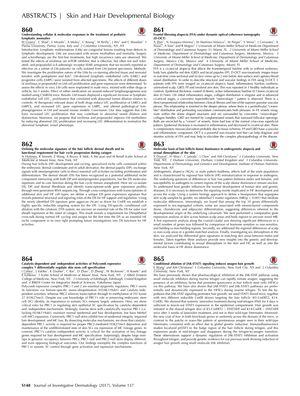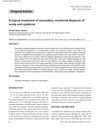Frontal Fibrosing Alopecia Under Dynamic Optical Coherence Tomography
April 2017
in “
Journal of Investigative Dermatology
”
Frontal Fibrosing Alopecia Dynamic Optical Coherence Tomography FFA D-OCT epidermal thickness inflammatory skin cicatricial skin collagen distribution clinical fibrosis superior granular vascular plexus vascular component inflammatory component neovascularization tissue ischemia frontal hairline recession optical imaging skin inflammation scar tissue blood vessel network new blood vessel formation reduced blood flow

TLDR D-OCT shows increased blood vessel growth in response to tissue damage in Frontal Fibrosing Alopecia and is useful for diagnosis and monitoring.
The document presents findings on Frontal Fibrosing Alopecia (FFA) using Dynamic Optical Coherence Tomography (D-OCT). FFA patients were imaged to describe structural and vascular findings in various skin areas affected by the condition. The study found that epidermal thickness increased in inflammatory skin and decreased in cicatricial skin. In the early inflammatory stages, collagen distribution was irregular, and in advanced stages, a concentric hyperreflectant "onion-shape" pattern was observed. There was a direct proportional relationship between clinical fibrosis and the loss of the superior granular vascular plexus, with an inverted relationship in the deeper plexus. Facial papules (FP) and glabellar red dots (GRD) showed a vascular and inflammatory component with a "crown" of vessels encircling them. The arms exhibited a loss of the normal criss-cross superficial pattern. The study concluded that there is compensatory neovascularization in response to tissue ischemia in FFA, and D-OCT is a powerful non-invasive tool that can help diagnose and monitor the activity of FFA. The number of participants in the study was not provided.


